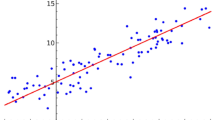Abstract
Over the last few years, FinTech (Financial Technology) companies have played a significant role in supporting e-commerce processes and transactions. For individual users, more convenient payment methods were invented to help them purchase more easily. For businesses, it’s now a lot easier to understand customers than ever, especially in knowing how they spend their money. In fact, the capability of predicting customer spending power over a period of time is a crucial task for marketers in making strategic decisions about advertising. However, it is not trivial to build such an automatic prediction system due to the numerous models and metrics available combined with the ad-hoc nature of personal purchases. In this paper, as the first step in tackling the above-mentioned problem, we explored the feasibility of applying different machine learning models and metrics to predict customer spending under different contexts. In particular, we applied Beta Geometric/Negative Binomial distribution (BG/NBD), Gamma-gamma, Linear Regression, Random Forest, and Light Gradient Boosting Machine (LightGBM) models to train and predict customer spending. Experimenting with anonymized real-world data supplied by one of the biggest payment providers in Vietnam provided us with valuable insights into the suitability of each model. The result of this research can serve as a foundation for more in-depth work on the same problem in the future.
Access this chapter
Tax calculation will be finalised at checkout
Purchases are for personal use only
Similar content being viewed by others
References
Fornell, C., Rust. R.T., Dekimpe, M.G., The effect of customer satisfaction on consumer spending growth. Journal of Marketing Research 47(1), 28–35 (2010). https://doi.org/10.1509/jmkr.47.1.28 Accessed 12 April 2022
Mehra, Y.P., Martin, E.: Why Does Consumer Sentiment Predict Household Spending?. FRB Richmond Economic Quarterly 89(4), pp. 51–67 (Fall 2003). Available at SSRN: https://ssrn.com/abstract=2184918 Accessed 12 April 2022
Shea, J.: Myopia, Liquidity Constraints, and Aggregate Consumption: A Simple Test. Journal of Money, Credit and Banking 27(3), 798–805 (1995). https://doi.org/10.2307/2077751. Accessed 12 April 2022
Hall, R.: Stochastic Implications of the Life Cycle-Permanent Income Hypothesis: Theory and Evidence. Journal of Political Economy 86(6), 971–987 (1978). https://doi.org/10.1086/260724 Accessed 12 April 2022
Fay, J.: In Search of Spending — Part 1. Medium (2022). [Online]. Available: https://medium.com/swlh/in-search-of-spending-part-1-b50487c0f55a. Accessed: 12 Apr 2022
Yoo, S., Hanssens, D.: Modeling the Sales and Customer Equity Effects of the Marketing Mix. UCLA Anderson School of Management (2022)
Cui, D., Curry, D.: Prediction in Marketing Using the Support Vector Machine. Marketing Science 24(4), 595–615 (2005). Accessed: 12 Apr 2022
Chen, P., Guitart, A., del Rio, A., Perianez, A.: Customer lifetime value in video games using deep learning and parametric models. In: 2018 IEEE International Conference on Big Data (Big Data) (2018). Accessed: 12 Apr 2022
Martínez, A., Schmuck, C., Pereverzyev, S., Pirker, C., Haltmeier, M.: A machine learning framework for customer purchase prediction in the non-contractual setting. European Journal of Operational Research 281(3), 588–596 (2020). Accessed: 12 Apr 2022
Qiu, J., Lin, Z., Li, Y.: Predicting customer purchase behavior in the e-commerce context. Electronic Commerce Research 15(4), 427–452 (2015). Accessed: 12 Apr 2022
Fader, P.S., Hardie, B.G.S., Lee, K.L.: Counting your customers the easy way: an alternative to the Pareto/NBD Model. Mark. Sci. 24(2), 275–284 (2005)
Yuan, M., Ekici, A., Lu, Z., Monteiro, R.: Dimension reduction and coefficient estimation in multivariate linear regression. Journal of the Royal Statistical Society: Series B (Statistical Methodology) 69(3), 329–346 (2007)
Marill, K.: Advanced statistics: linear regression, part i: simple linear regression. Acad. Emerg. Med. 11(1), 87–93 (2004)
Chen, X., Jun, H.U., Deng, J.: Weight correction model of condition assessment for substation equipment based on multiple linear regression method. High Voltage Apparatus 53(1), 14–19 (2017)
Brownlee, J.: Bagging and Random Forest Ensemble Algorithms for Machine Learning. Machine Learning Mastery (2022). [Online]. Available: https://machinelearningmastery.com/bagging-and-random-forest-ensemble-algorithms-for-machine-learning/. Accessed: 06 Aug 2022
Fader, S.P., Hardie, G.S.B.: The Gamma-Gamma Model of Monetary Value (2022). [online] Brucehardie.com. Available at: <http://www.brucehardie.com/notes/025/gamma_gamma.pdf> Accessed 14 September 2022
Chai, T., Draxler, R.: Root mean square error (RMSE) or mean absolute error (MAE)? – Arguments against avoiding RMSE in the literature. Geoscientific Model Development 7(3), 1247–1250 (2014). https://doi.org/10.5194/gmd-7-1247-2014 Accessed 14 September 2022
Castéran, H., Waarden, L.M., Reinartz, W.: Modeling Customer Lifetime Value, Retention, and Churn. Springer. [Online]. Available: https://doi.org/10.1007/978-3-319-57413-4_21.pdf
Acknowledgement
This project would not have been possible without the guidance from the ZaloPay's technical mentor. He had given us plenty of dedicated feedbacks in the project. Besides, we would like to thank ZaloPay for allowing us to access the anonymized payment data. Without it, our work would not be further processed.
Author information
Authors and Affiliations
Corresponding author
Editor information
Editors and Affiliations
Rights and permissions
Copyright information
© 2022 The Author(s), under exclusive license to Springer Nature Singapore Pte Ltd.
About this paper
Cite this paper
Hoang, K.N., Thanh, L.B., Thuy, T.N.T., Quoc, C.N., Dang, T.T. (2022). On the Feasibility of Machine Learning Models for Customer Spending Prediction Problem. In: Dang, T.K., Küng, J., Chung, T.M. (eds) Future Data and Security Engineering. Big Data, Security and Privacy, Smart City and Industry 4.0 Applications. FDSE 2022. Communications in Computer and Information Science, vol 1688. Springer, Singapore. https://doi.org/10.1007/978-981-19-8069-5_35
Download citation
DOI: https://doi.org/10.1007/978-981-19-8069-5_35
Published:
Publisher Name: Springer, Singapore
Print ISBN: 978-981-19-8068-8
Online ISBN: 978-981-19-8069-5
eBook Packages: Computer ScienceComputer Science (R0)




